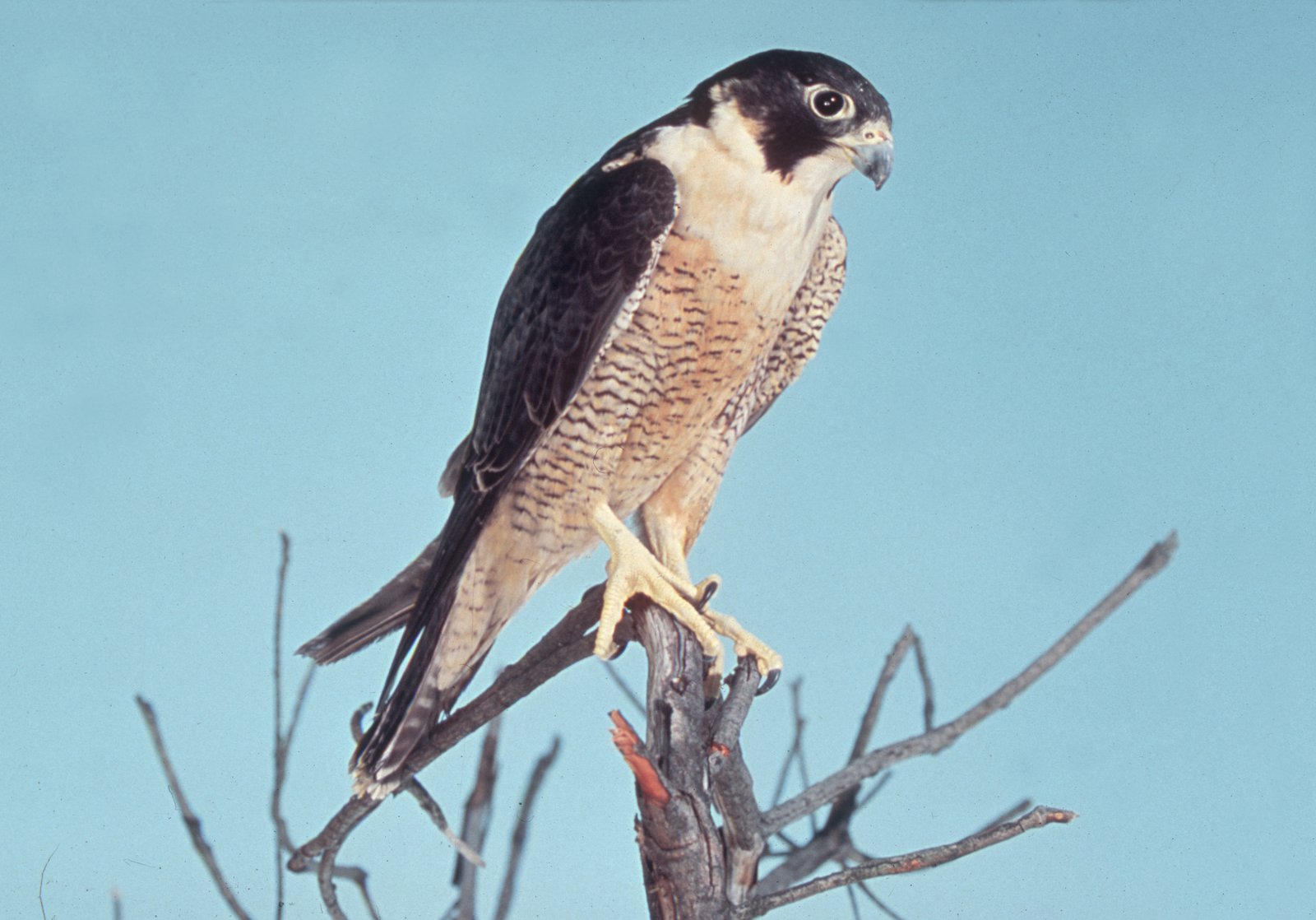Peregrine Falcon
Australian Hobby
Introduction
The Peregrine Falcon is one of the fastest birds of prey, swooping down at speeds of up to 300 km/h.
Identification
Peregrine Falcons are large, powerfully built raptors (birds of prey), with a black hood, blue-black upperparts and creamy white chin, throat and underparts, which are finely barred from the breast to the tail. The long tapered wings have a straight trailing edge in flight and the tail is relatively short. The eye-ring is yellow, with the heavy bill also yellow, tipped black. Although widespread throughout the world, it is not a common species.
Habitat
The Peregrine Falcon is found in most habitats, from rainforests to the arid zone, and at most altitudes, from the coast to alpine areas. It requires abundant prey and secure nest sites, and prefers coastal and inland cliffs or open woodlands near water, and may even be found nesting on high city buildings.
Distribution
The Peregrine Falcon is found across Australia, but is not common anywhere. It is also found in Europe, Asia, Africa and the Americas.

© Australian Museum
Seasonality
Largely resident, with young birds roaming at random until they are ready to breed.
Feeding and diet
The Peregrine Falcon feeds on small and medium-sized birds, as well as rabbits and other day-active mammals. It swoops down on its prey from above, catching or stunning it with its powerfully hooked talons, before grasping and carrying it off to a perch to pluck and eat it. It will pursue flying birds, being able to fly at speeds of up to 300 km/h, and it soars to a great height in search of prey. Pairs may hunt co-operatively, with one member, usually the male, scattering a flock of birds while the other swoops down to attack a particular individual. This co-operative behaviour is most often observed during the breeding season.
Communication
Loud, shrill, repeated: 'hek-ek-ek', with females lower-pitched than males.
Breeding behaviours
The Peregrine Falcon mates for life and pairs maintain a home range of about 20 km to 30 km square throughout the year. Rather than building a nest, it lays its eggs in recesses of cliff faces, tree hollows or in the large abandoned nests of other birds. The female incubates the eggs and is fed by the male on the nest. When the young have hatched, both parents hunt to provide food. Young Peregrine Falcons disperse widely, but often return to their original home area to breed when mature.
- Breeding Season: August to December
- Clutch size: Two to four, usually three
- Incubation: 30 days
- Time in nest: 35 days
Economic impacts
Pesticides have been found to thin the eggshells of Peregrine Falcons, decreasing their nesting success in some areas. However, although these birds are not common, they have successfully spread worldwide, and will sometimes nest on artificial structures such as the window ledges of high buildings.
References
- Olsen, P. 1995. Australian Birds of Prey: the Biology and Conservation of Raptors. University of New South Wales Press, Sydney.
- Schodde, R. and Tideman, S.C. (eds) 1990. Reader's Digest Complete Book of Australian Birds (2nd Edition). Reader's Digest (Australia) Pty Ltd, Sydney.
- Morcombe, M. 2000. Field guide to Australian Birds. Steve Parish Publishing.
- Simpson, K and Day, N. 1999. Field guide to the birds of Australia, 6th Edition.Penguin Books, Australia.


